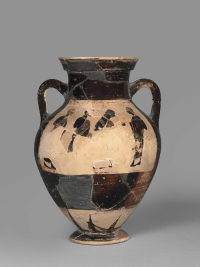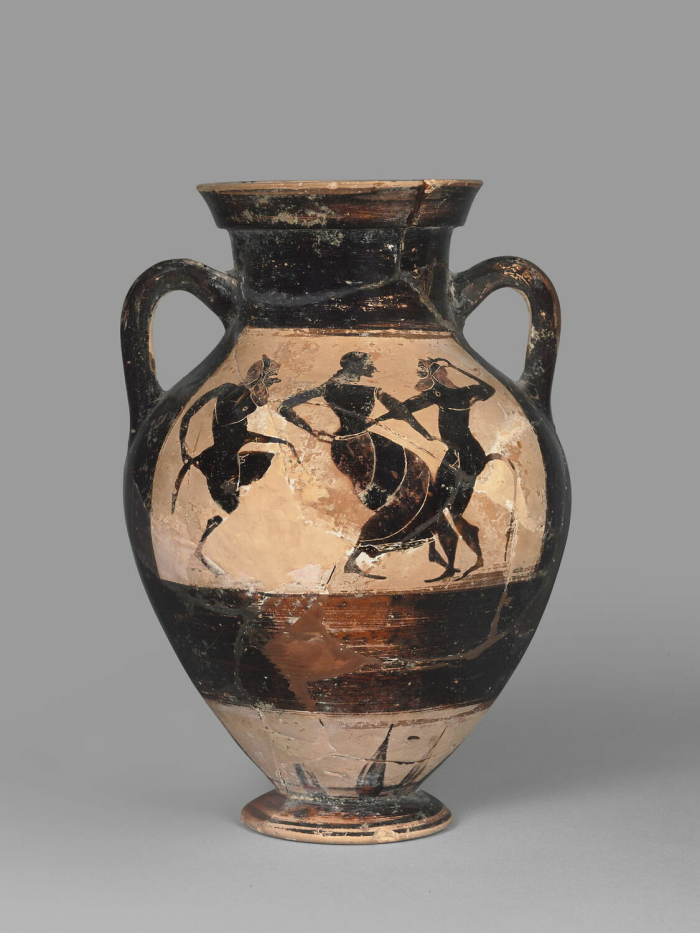


amphora
An item at Louvre
Decoration: on belly (side A and B); painting (surmounted by, net); on belly (side A); Dionysian scene; satyr (2, nude, dancing, on either side of); maenad (headband, chiton, embroidered, belt, dancing) on belly (side B); conversation scene; man (3, beard, himation, embroidered, near); young man (himation, embroidered) on belly (at the bottom); radiating edges Condition of the work: incomplete; concretions; reattached; gaps all over the vase (less the left leg of the first satyr, the tail of the second satyr, the lower part of three of the figures on side B, a large area of the belly under the handle AB, part of the mouth, the radiating edges and the foot) completed in plaster; wear of the reserved surfaces in the illustrated areas - alteration of the colored highlights.
Department of Greek, Etruscan and Roman Antiquities
An exhibit at Louvre
The Department of Greek, Etruscan, and Roman Antiquities is home to a collection of artworks representing the Greek, Etruscan, and Roman civilizations; it illustrates the art of a vast area encompassing Greece, Italy, and the whole of the Mediterranean basin, and spans the period from Neolithic times (4th millennium BC) to the 6th century AD.




